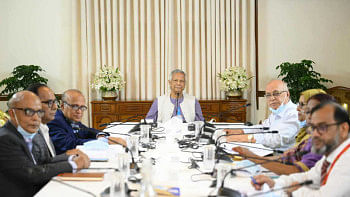Tourist spending to rise 6pc this year
Spending by domestic tourists is expected to grow about 6 percent year-on-year in 2015 to Tk 51,770 crore, World Travel & Tourism Council said in its latest study.
In 2014, local tourist spending grew 5.35 percent year-on-year, which is lower than the London-based research organisation's projection of 7 percent then.
Analysts, however, said the growth of tourism spending will slow down this year mainly due to the unstable political environment in the country.
The forecast of WTTC seems to be unachievable as the country is witnessing a volatile political environment this year compared to the previous year, said Kazi Wahidul Alam, a travel and tourism analyst.
The peak tourism season in Bangladesh starts in November and lasts through March. But the prolonged blockades and strikes since early January have already hit the sector hard, he said.
Hotels in tourist areas that normally witness an average of 70-80 percent room occupancy during the peak season now have only 20-25 percent occupancy due to blockades and strikes, said Alam, also the editor of Bangladesh Monitor, a fortnightly travel and tourism magazine.
Considering the present political environment, he predicts that tourist spending will grow at most 3 percent this year.
The tourism industry is incurring losses of Tk 210 crore a day on average due to blockades or hartals, according to a recent study of the Dhaka Chamber of Commerce and Industry.
The current political situation not only heralds bad business for the sector, but also creates a poor impression of the country among international tourists, according to industry people.
Both foreign and domestic tourists are afraid of moving around due to the nonstop blockade that has not only brought losses to tour operators but also deprived local impoverished people around the sites of their livelihoods. When tourists move from one site to another, they spend money for food, transport, accommodation and souvenirs, boosting the local economy.
But nonstop countrywide strikes, invariably associated with violence, have forced the tourists to stay inside their hotels.
Travel and tourism contributed Tk 29,660 crore, or 1.9 percent, to the country's gross domestic product last year.
This year, it is forecasted to put in Tk 33,310 crore, up 5.9 percent.
The direct contribution of travel and tourism to GDP reflects the 'internal' spending within a particular country by residents and non-residents for business and leisure purposes. This also includes the government's spending directly linked to visitors, such as museums or national parks.
The WTTC has been conducting economic impact research for more than 21 years now to assess and quantify the value of travel and tourism's contribution to GDP and employment. The study said travel and tourism investment in Bangladesh was Tk 6,090 crore in 2014, or 1.4 percent of the total investment.
It predicted that the country will attract 463,000 international tourist arrivals this year.
Travel and tourism also generated 903,500 jobs directly in 2014 (1.6 percent of total employment) in the country and is forecasted to grow 2.1 percent this year.
This includes employment by hotels, travel agents, airlines and other passenger transportation services (excluding commuter services).
It also includes, for example, the activities of the restaurants and leisure industries directly supported by tourists.
Domestic travel spending in Bangladesh generated 97.9 percent of direct travel and tourism GDP in 2014 compared with 2.1 percent for visitor exports (for example foreign visitor spending or international tourism receipts).
Visitor exports -- spending within the country by international tourists for both business and leisure trips -- are a key component of the direct contribution of travel and tourism.
In 2014, Bangladesh generated Tk 1,020 crore in visitor exports and the amount may rise to Tk 1,060 crore this year.
Together with its research partner Oxford Economics, WTTC produces comprehensive reports on an annual basis to quantify, compare and forecast the economic impact of travel and tourism on more than 180 economies around the world.
It also publishes a world report highlighting global trends, as well as reports on regions, sub-regions and economic and geographic groups.

 For all latest news, follow The Daily Star's Google News channel.
For all latest news, follow The Daily Star's Google News channel. 



Comments